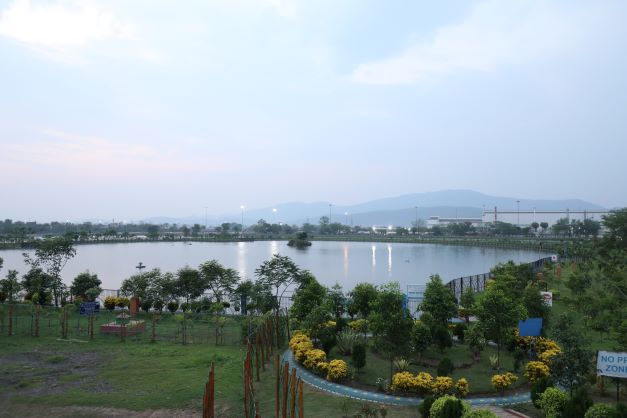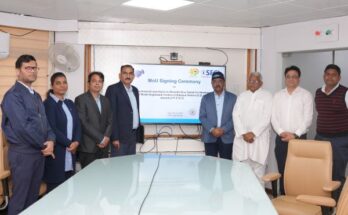
Team News Riveting
Jamshedpur, June 17
Tata Steel has taken up several projects to mitigate the effects of desertification and drought in its operating areas largely through community participation.
Desertification and Drought Day was officially declared by the UN General Assembly as “World Day to
Combat Desertification and Drought”. It aims to promote public awareness of international efforts to
combat desertification. The day is a unique moment to remind everyone that land degradation
neutrality is achievable through problem-solving, strong community involvement and co-operation at all
levels.
Drought is already affecting all types of countries, in all types of geographies, negatively impacting global food systems, health, economic and social development. This trend is likely to continue unless we all get behind the necessary change and invest in solutions. Insufficient rainfall is not the only cause of drought. There is a lack of awareness about human-induced water scarcity that exacerbates drought risks and effects.
As we observe, World Day to Combat Desertification and Drought (June 17), the steel major is constantly working towards restoring the land affected due to mining and other related operations, which otherwise degrade our ecosystem. The initiatives include afforestation through Miyawaki Plantations, Greenbelt development, Plantation through seedballs in hard-to-reach areas, mine reclamation through plantation activities and water body creation.
All initiatives involve communities and local stakeholders from awareness building to implementation
and monitoring. Plantations along with rainwater harvesting and water body restoration have significant
role in preventing drought.
Desertification and drought can be effectively tackled with existing solutions. Key tools for tackling this global challenge lies in strengthened community participation and cooperation at all levels. Deforestation, mining and industrial activities are some of the leading causes of desertification.
In collaboration with International Union Conservation of Nature, various mining locations have taken up meaningful initiatives under its Biodiversity Management Plan. Plantation through ancient Miyawaki Forestation method, seedball plantation, niche nesting for native bird species and expanding the green cover through successive plantation drives have helped in promoting the smart sustainable mining philosophy alive. Back filling mined out areas is one such activity that has created the beautiful ecosystem of the Dorabji Tata Park and the Triangular Park in Jharia coal mining areas.
The Jugsalai Muck Dump (JMD) was spread over an area of 62 acers, the dump height level is variable
from 133 m to 188 m above mean sea level having varied slopes, terraces and locations. The dumping
has yielded a high level of undulation and the site is devoid of organic matters sustainable for vegetative
growth. JMD was not only an eye sore to this beautiful Steel City but also posed severe environmental,
safety and health hazards for the people of Jamshedpur.
The objective of JMD development was to create environmentally safe and sustainable ‘Green Cover’
and suitable ‘Geo Green Blanketing’ to protect side slopes and prevent soil erosion and dust control
while adding aesthetic value to the steel city of Jamshedpur.
One of main focus area of the United Nations Convention is to Combat Desertification (UNCCD) and to
rehabilitate the degraded lands and create forest cover for arresting desertification. JMD is helping in achieving this objective of UNCCD by arresting the soil erosion and assisting in air pollution control and
checking in the contamination of water of bodies through plantation and dump reclamation as eco-park.
Considering the biodiversity conservation through restoration, rehabilitation and managing ecosystem
services JMD has become home for different species medicinal plants, birds, small animals, butterflies
etc. To minimise emissions and mitigate climate change, JMD contribute in stopping fire hazard caused
during peak summers. Water bodies created within the reclaimed dump, not only help in rain water
harvesting but have also enhanced the biodiversity with fishes and ducks. The water fountain in water
bodies help in aeration of water bodies and also provide an appealing look to the entire area. Pond
Liners are used to prevent seepage and leaching. Solar Energy is also being harnessed at the Park for
generation of electricity for irrigation and lighting.
JMD is now developed as an eco-park and has also
enhanced the biodiversity in the area and also minimized the environmental impact of a dump area.



